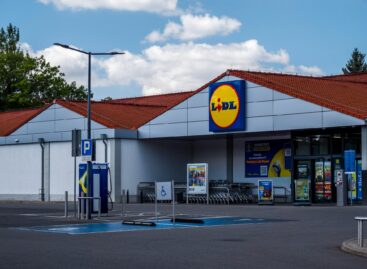Chicken breast is the favorite – meat consumption is rising again in Hungary
Domestic customers continue to prefer poultry meat, according to recent data from Lidl Hungary. Chicken breast is the most popular product, but the total turnover of fresh poultry meat is also outstanding. According to the company’s data, in 2024, the sale of fresh poultry meat exceeded 45 thousand tons, and of this, chicken breast alone generated more turnover than all other types of meat combined. The preferences of customers are also supported by the statistics of the Central Statistical Office: poultry meat consumption is also dominant nationwide.
 According to the 2023 data of the Central Statistical Office, the annual meat consumption per capita reached 68 kilograms, of which 36.3 kg was poultry meat, 29.3 kg was pork, while only 3.1 kg was beef and veal. Although this amount may seem high, Hungarian meat consumption is still below the peak of the 1980s, when the annual amount exceeded 80 kilograms. However, the trend is on the rise again. Poultry meat is also growing in popularity at the European level: by 2025, EU consumption could reach 25.2 kg/person, compared to 16.4 kg in the early 2000s.
According to the 2023 data of the Central Statistical Office, the annual meat consumption per capita reached 68 kilograms, of which 36.3 kg was poultry meat, 29.3 kg was pork, while only 3.1 kg was beef and veal. Although this amount may seem high, Hungarian meat consumption is still below the peak of the 1980s, when the annual amount exceeded 80 kilograms. However, the trend is on the rise again. Poultry meat is also growing in popularity at the European level: by 2025, EU consumption could reach 25.2 kg/person, compared to 16.4 kg in the early 2000s.
Lidl Hungary sells around 70,000 tonnes of fresh meat annually, typically from domestic suppliers. The range includes 41 types of poultry meat and 56 types of other meat – including pork and beef. The company’s own-brand Húsfarm products are 100% Hungarian in origin. The discount chain also helps its partners to export markets within the framework of the “Lidl for Hungarian Suppliers” program: the products of domestic meat producers are available in 22 European countries, and whole ducks and turkeys are particularly popular, of which 5,000 tons are exported abroad annually.
Lidl also places great emphasis on food safety: its suppliers must have strict international certificates, and its products undergo regular laboratory testing. In the case of pre-packaged meat, protective gas packaging is used, which consists of natural ingredients, does not affect the taste or texture, and at the same time ensures freshness for 5–11 days.
The growth of fresh meat turnover is not only a market issue, but also a strategic one: in order to strengthen the competitiveness of the Hungarian meat industry and sustainable supply chains, commercial models that ensure stable demand for domestic producers play a key role – both domestically and in international markets.
Related news
Lock on the bag: a Hungarian shop photo goes viral, while plastic bags are already being phased out in several markets
🎧 Hallgasd a cikket: Lejátszás Szünet Folytatás Leállítás Nyelv: Auto…
Read more >Lidl is the main sponsor of Veganuár™ 2026: the year starts with new vegan products and discounts
🎧 Hallgasd a cikket: Lejátszás Szünet Folytatás Leállítás Nyelv: Auto…
Read more >Record Christmas at Lidl in Great Britain: turnover of over £1.1 billion in four weeks
🎧 Hallgasd a cikket: Lejátszás Szünet Folytatás Leállítás Nyelv: Auto…
Read more >Related news
Circular transition more urgent than ever
🎧 Hallgasd a cikket: Lejátszás Szünet Folytatás Leállítás Nyelv: Auto…
Read more >Ads Interactive Media Group will sell the retail media platforms of Auchan Hungary Kft. stores from 2026
🎧 Hallgasd a cikket: Lejátszás Szünet Folytatás Leállítás Nyelv: Auto…
Read more >Foxfilm teaches entrepreneurs how to make videos
🎧 Hallgasd a cikket: Lejátszás Szünet Folytatás Leállítás Nyelv: Auto…
Read more >







